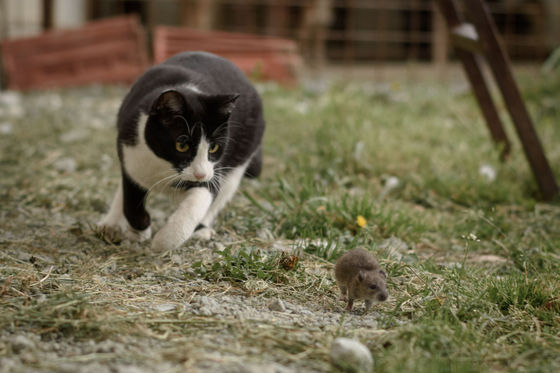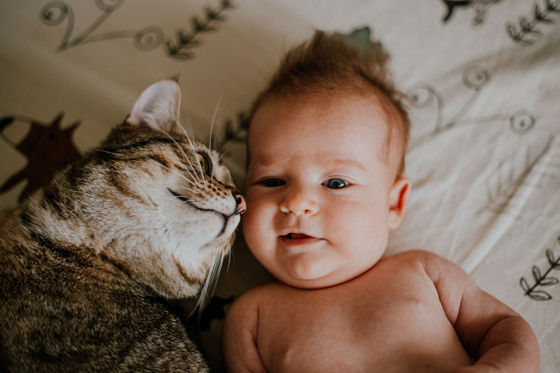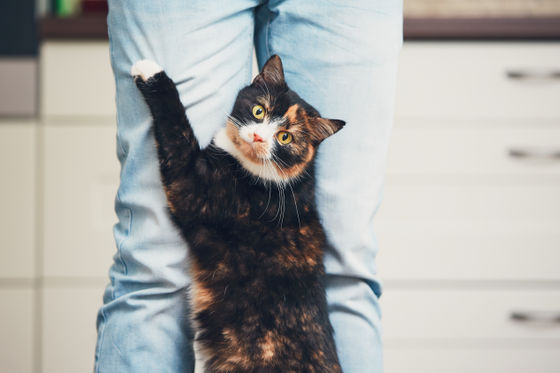Why a cat's 'meow' makes people fall in love with it

If you have a cat, you often hear it meowing, but cats rarely meow like this with other cats. Grace Carroll, a lecturer in animal behavior and welfare at Queen's University Belfast in Northern Ireland, explains the history of how cats have changed the way they meow while living with humans, and why cat meows are so captivating.
Why cats meow at humans more than each other
Cats are originally solitary animals, and most of their social behavior has been limited to interacting with their mothers during kittenhood. This is thought to have changed with their encounter with humans, who began to live in settlements about 10,000 years ago.
When people began to live in certain areas, rats began to live there, which in turn attracted rat-eating cats. Highly adaptable and fearless, and unafraid of human presence, cats thrived, benefiting from an abundance of food, and eventually developed close relationships with humans.

Unlike dogs, which humans domesticated for traits that were useful to humans, cats essentially domesticated themselves, Carroll points out: Being tame and communicative with humans was beneficial for cats' survival, so cat populations developed that were better suited to living alongside humans.
This process is supported by Russian experiments with foxes: In the 1950s, Soviet scientist
As generations passed, the foxes became more docile and friendly towards humans, and their appearance became more dog-like, with droopy ears and curly tails. Their cries also changed from an aggressive one to a 'clack-clack' sound that sounds like human laughter.
This experiment demonstrated that selective breeding can cause behavioral and physical changes in just a few decades that would take thousands of years in the wild. Although the differences are not as pronounced as those between dogs and wolves, domestic cats have also changed from their ancestors, the African wildcat ( African wildcat ). For example, domestic cats have fur of a variety of colors, including white, black, brown tabby, and brown tabby, but Carroll said that this diversification is a common feature of domesticated animals. Their brains are also smaller than those of wild cats.
Just as foxes have changed their meows over the decades, cats have also changed their meows over the long time they have spent with humans. What cats have taken inspiration from are human babies. Since newborn babies cannot survive without the care of their parents, humans are keen to detect distress signals from babies, and cats have adapted the way they meow to take advantage of this.

Karen McCombe, an animal behaviorist at the University of Sussex in the UK, and her colleagues conducted an experiment in 2009 in which they had humans compare cat meows. One was a 'triggered
Acoustic analysis also found that the purring has a high-pitched component similar to a human cry. The hidden cry in a cat's meow is intended to exploit the human instinct for vocalizations of distress, making it nearly impossible for humans to ignore.
But humans have also changed their vocalizations: Just as humans talk to babies using baby talk , or babbling, which is characterized by a higher pitch, exaggerated tone and simplified language, so do pet owners.

In a 2022 study , Charlotte de Mouzon, an animal behaviorist at the University of Paris Nanterre, and her team demonstrated that cats can distinguish between voices directed at them and conversations between human adults, especially when the speaker is their owner.
In this way, humans and cats deepen their bond by recreating the interactions between mother cats and kittens. This is not limited to cats; dogs also often bark in a way that is easy for them to communicate with humans, and humans also use pet-friendly language when communicating with dogs.
'Cats have evolved over time to use vocalizations that resonate with our parenting instincts, and we use pet-language to communicate, so this two-way communication highlights the unique bond between humans and cats,' said Carroll. 'If there were winners or losers, the winners would likely be cats who have adapted to attract human attention and care, but cat owners also seem to be happy with the relationship.'
Related Posts:







